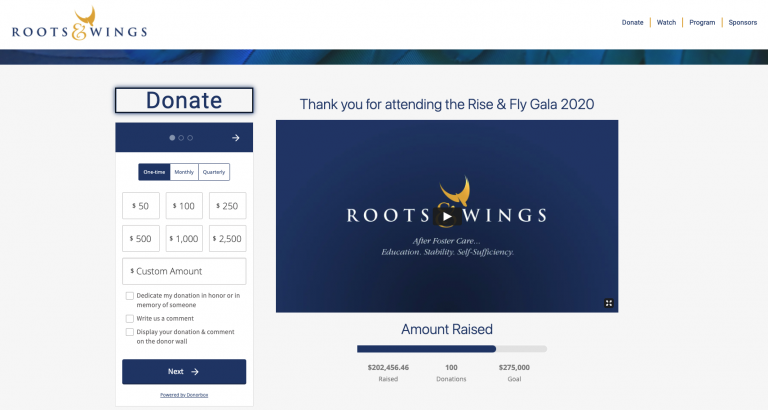
The Five Ps of Virtual Event Production
As the pandemic continues to impact in-person events, we have been inundated with questions concerning virtual event production. How do we transition to virtual events? What does it take to run and manage a virtual event? Help! (That last one really isn’t a question but something we hear a lot) With many having limited virtual event experience prior to the pandemic, we wanted to share five important areas to focus on or as we like to call them, The Five Ps of Virtual Event Production.
Planning
This one may seem like a given but everything about putting on spectacular events comes back to the initial planning. Taking the time to explore how attendees experience your event and centering all decisions around that will leave you with an event that will have everyone talking (and in a good way). During the planning phase, it’s important to focus on project management and establish your run of show, which is like storyboarding the event from start to finish. This will help you flag any potential issues and work to find solutions or platforms that can help mitigate them.
Procurement (Content Creation)
For virtual events, content is king. That is why it is important to focus on what content will need to be gathered, prerecorded ahead of time, or procured during the live event. It is also important to consider the messaging you want your content to send during the event. Do you want it to be informative or tug on the heartstrings? Are you marketing your brand or asking for donations? Always think about your event goals when considering messaging and content and make sure it fits with that. You will also want to consider the style of your event. Do you want it to feel like a live event or more of a broadcast TV-type affair? Either one will have different content needs and you will need to adjust and collect accordingly.
Production
It is important to consider the live engineering of the event and plan out what your technical staffing needs will be. This will be the team you entrust to manage everything to ensure your event runs smoothly. In relation to this, it’s important to analyze your technology needs and make sure the technology you select is the right one for your event needs. Your production team can then be relied on for all technical considerations, including virtual event platform management, event streaming, and technical support.
Propagation
Another important consideration is propagation or selecting the right content delivery network (CDN). For those with the ability and experience to use their own internal network, specific software can be incorporated to help increase and decrease capacity as needed for your virtual events. Those without that, will need to outsource and purchase a content delivery network to use or rely on something like Zoom, YouTube, or Facebook to host and distribute content. There may be a risk in using the latter programs because you won’t be able to control how the number of users will impact the speed and the overall experience. We recommend speaking with technology consultants or virtual event platform providers to advise on how best to handle your propagation needs.
Platform
Last but not least, one of the most important things is selecting the right virtual event platform. This is what will fully guide the viewing experience and it’s important to find one that not only fits the look and feel of your event but your budget too. When choosing a virtual event platform, it’s important to think beyond your event program and find something that can support an event landing page, which can include pre-event material and registration information. These landing pages are becoming more of a necessity and can also be used to host content that can be viewed post-event. Many virtual event platforms can also handle your propagation needs and it’s important to discuss this with them when selecting a provider.

